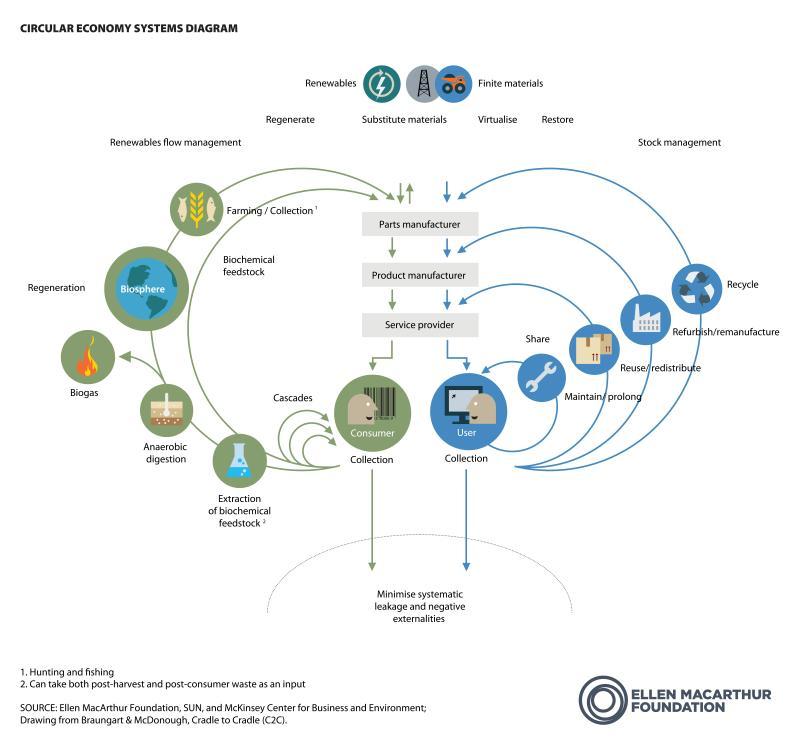Access to capital
Bringing these circular economy solutions to scale will create substantial additional investment opportunities. Analysis has shown that in Europe investing an additional €320 billion across three broad themes could unlock the economic, societal, and environmental benefits of such a transition. In the built environment, €115 billion could be invested in designing modular buildings for multiple uses, ramping up the reuse of construction waste, and integrating circular economy principles into urban planning. For better mobility, €135 billion could be invested in integrating shared vehicles into public transport, producing zero- emission cars that can be remanufactured, and establishing reverse logistics for vehicles. Investing €70 billion in the food system could take the form of shifting to regenerative agricultural practices, circulating organic nutrients, and supporting new technologies such as aquaponics and new protein sources. These investments, which can be facilitated by modest policy reforms or industry actions, would allow circular economy innovations to reach their full potential.
Capital is beginning to flow. In September, the Italian banking group Intesa Sanpaolo announced a credit facility of up to €5 billion for 2018- 2021 for businesses that adopt circular economy thinking in innovative ways. Dutch banking group ING publishes analysis on the financial benefits of going circular, develops circular business propositions and transactions with clients, and creates market demand for circular products. Public funding is also available. The EU has allocated €650 million for circular economy research and innovation under Horizon 2020, and €5.5 billion under Structural and Investment Funds for waste management. At EU Member State level, the European Investment Bank has provided €2.4 billion in co-financing for circular economy projects over the last five years, offering not only loans and other instruments, but also financial and technical advice.
How to channel further capital towards these circular business opportunities and away from linear ones? One avenue could be to measure the circularity of a business. If they are robust and easy enough to use, such measures could become widely adopted by investors and high scores could indicate a likely source of market outperformance. Another route could be to increase the attractiveness of financing assets by designing in circularity from the start. This would increase their value after use and reduce the risk of costly decommissioning. Such an approach could be applied to energy infrastructure, real estate, and shipping to name just a few. A rethink of the shorter-term financing needs of circular business models will also be necessary. Pay-per-use models, for instance, increase working capital requirements since the time is extended, potentially by years, before production costs are recovered. This increases credit risk towards customers, but reduces raw material price risk. Could a leasing model share – between the user, producer and financier – the higher underlying value of reduced future production costs? Finance in a circular economy is still a young field and innovative thinking is needed.

